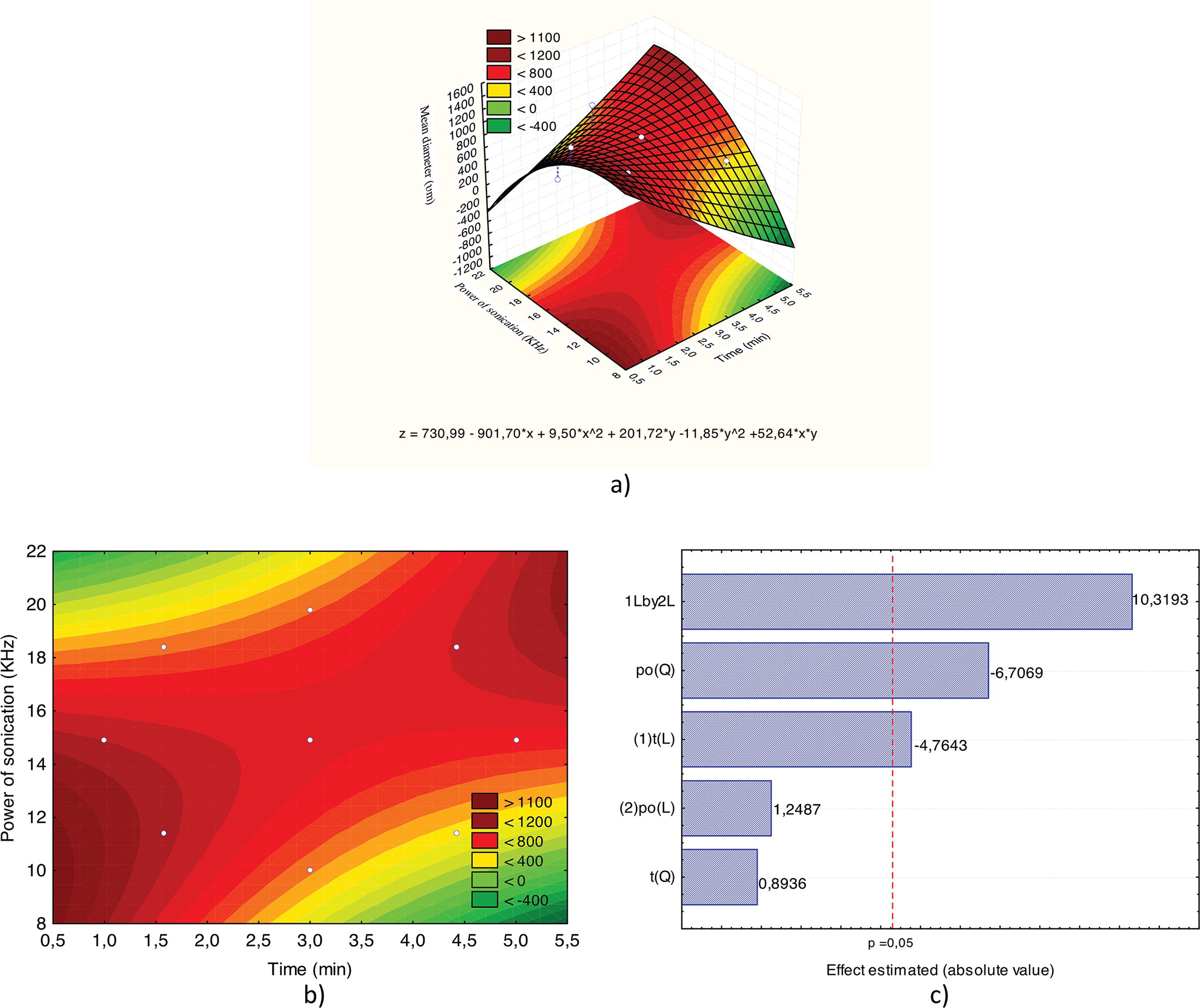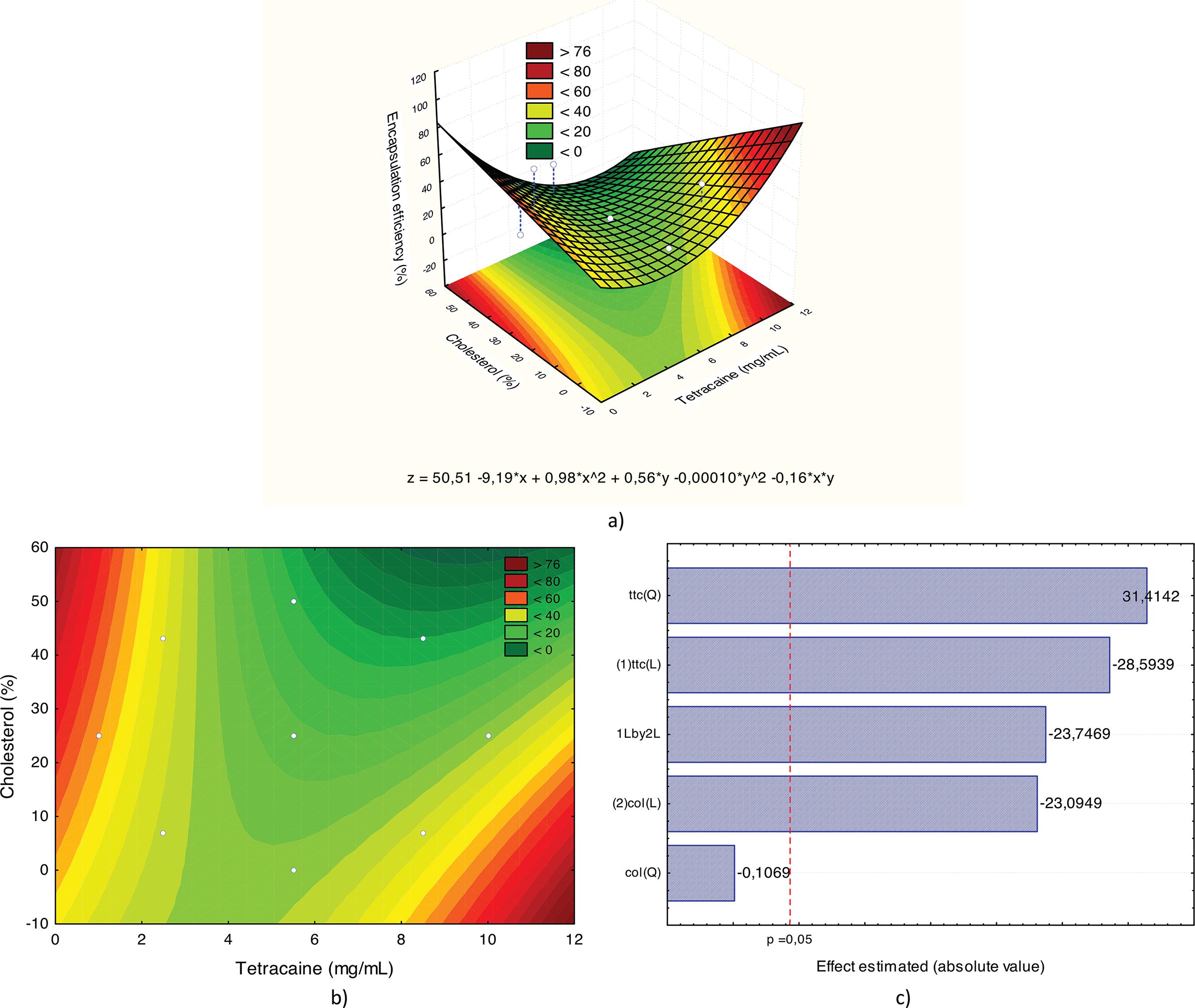This study evaluated the incorporation of tetracaine into liposomes by RSM (Response Surface Methodology) and ANN (Artificial Neural Networks) based models. RCCD (rotational central composite design) and ANN were performed to optimize the sonication conditions of particles containing 100 % lipid. Laser light scattering was used to perform measure hydrodynamic radius and size distribution of vesicles. The liposomal formulations were analyzed by incorporating the drug into the hydrophilic phase or the lipophilic phase. RCCD and ANN were conducted, having the lipid/cholesterol ratio and concentration of tetracaine as variables investigated and, the encapsulation efficiency and mean diameter of the vesicles as response variables. The optimum sonication condition set at a power of 16 kHz and 3 minutes, resulting in sizes smaller than 800 nm. Maximum encapsulation efficiency (39.7 %) was obtained in the hydrophilic phase to a tetracaine concentration of 8.37 mg/mL and 79.5:20.5% lipid/cholesterol ratio. Liposomes were stable for about 30 days (at 4 ºC), and the drug encapsulation efficiency was higher in the hydrophilic phase. The experimental results of RCCD-RSM and ANN techniques show ANN obtained more refined prediction errors that RCCD-RSM technique, therefore, ANN can be considered as an efficient mathematical method to characterize the incorporation of tetracaine into liposomes.
Keywords:
Local anesthetics; Liposomes; Response Surface Methodology; Artificial Neural Networks





